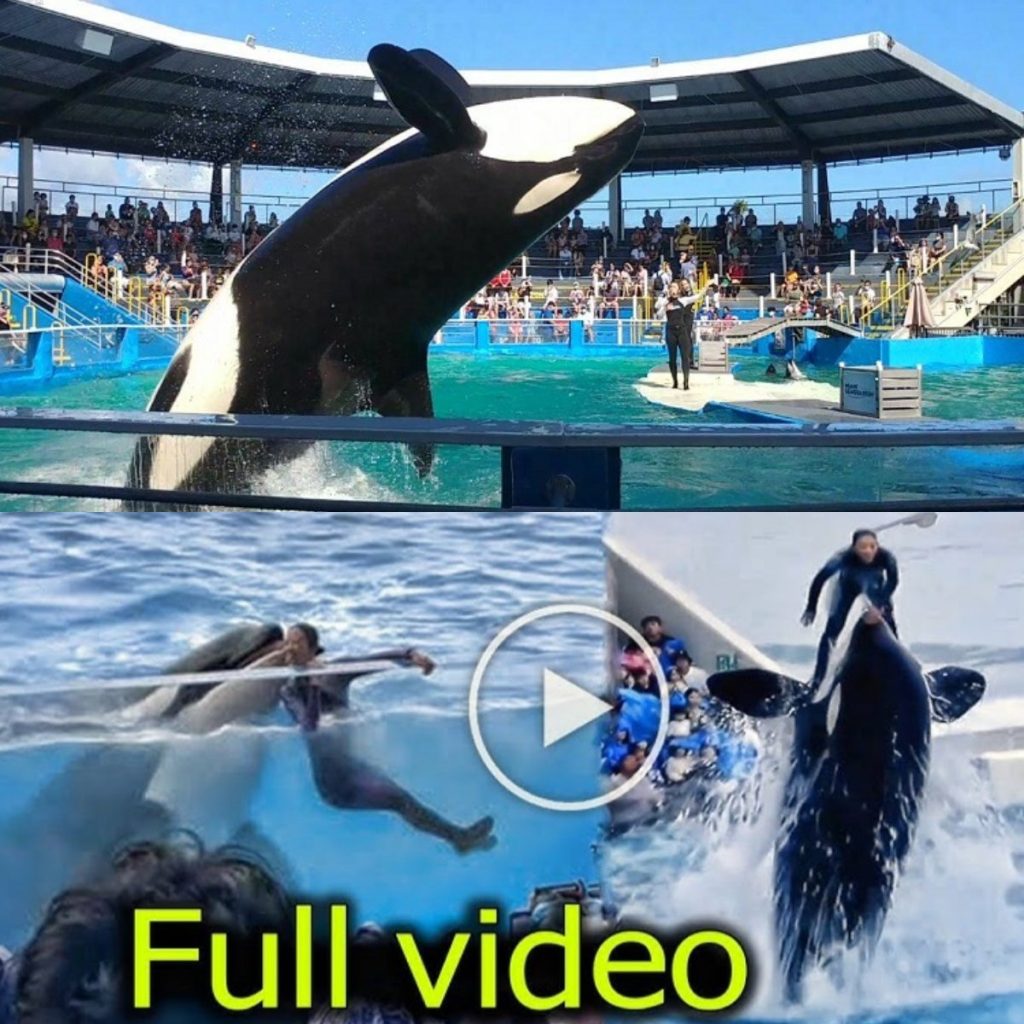
SH0CK: SeaWorld’s Failed $75,000 Cover-Up of a Horrific Orca Attack
In the polished world of marine theme parks, where choreographed shows and smiling trainers create an illusion of harmony, a dark secret has emerged that threatens to unravel SeaWorld’s carefully crafted image. A leaked report, first revealed in late 2024, exposed a chilling incident at SeaWorld’s Orlando facility—an orca attack so devastating that the company allegedly paid $75,000 to suppress the story. The attempt to bury the truth was meant to protect SeaWorld’s reputation, but the horror refused to stay hidden. Now, as details of the attack and the failed cover-up spill into the public eye, the marine entertainment industry faces a reckoning that could change it forever.
The incident occurred in September 2024, during a routine training session at SeaWorld Orlando. A veteran trainer, whose identity remains protected for legal reasons, was working with an orca named Kalia, a 20-year-old female known for her unpredictable behavior. According to internal memos obtained by investigators, the session began normally, with the trainer conducting desensitization exercises near the pool’s edge. Without warning, Kalia lunged, dragging the trainer into the water. Witnesses described a chaotic scene: the trainer struggled as Kalia thrashed violently, causing severe injuries. Emergency protocols were activated, but the trainer was rushed to a nearby hospital in critical condition, suffering from multiple fractures and internal trauma.
SeaWorld’s response was swift and calculated. Rather than publicly disclosing the incident, the company issued a vague statement about a “training mishap” and quietly settled with the trainer’s family for $75,000, contingent on a non-disclosure agreement. Internal documents suggest executives believed this payment would silence the matter, preserving the park’s family-friendly image. The trainer, still recovering, was reportedly pressured to accept the settlement under threat of losing future employment prospects. Meanwhile, SeaWorld downplayed the incident to staff, framing it as an isolated accident rather than a systemic failure. But the truth had a way of surfacing, as whistleblowers and a tenacious journalist uncovered the cover-up, igniting a firestorm of outrage.
The leaked report, first published by an independent news outlet, detailed not only the attack but also SeaWorld’s history of ignoring warning signs. Kalia had exhibited aggressive behavior in prior sessions, including lunging at trainers and refusing commands—red flags that were documented but dismissed by management. Former trainers interviewed for the investigation revealed a culture of fear at SeaWorld, where raising safety concerns could lead to ostracism or termination. “We were told to keep the shows going, no matter what,” one whistleblower said. “Profit came before safety, every time.” These revelations echo the 2010 tragedy of Dawn Brancheau, a SeaWorld trainer killed by the orca Tilikum, which spurred the documentary Blackfish and led to significant reforms, including the end of SeaWorld’s orca breeding program in 2016.
The Occupational Safety and Health Administration (OSHA) launched an investigation into the 2024 attack, concluding that SeaWorld failed to protect its employees from known hazards. The agency issued a serious citation and proposed a $16,550 fine, citing risks of bites, strikes, and drowning during close-contact training. While the fine was modest compared to the $75,000 settlement, it underscored SeaWorld’s negligence and reignited public scrutiny. Activists, emboldened by the leak, organized protests outside the Orlando park, demanding an end to orca captivity. Social media platforms like X exploded with hashtags like #SeaWorldCoverUp and #FreeKalia, amplifying calls for accountability.
Marine biologists featured in subsequent reports explained why orcas like Kalia are prone to such behavior. In the wild, these intelligent creatures roam vast distances, live in complex social groups, and hunt collaboratively. In captivity, their confined tanks and repetitive routines can lead to stress, frustration, and aggression. Kalia, born in captivity and separated from her mother at a young age, was particularly vulnerable to these effects. Experts argue that her attack was not an act of malice but a desperate response to an unnatural environment—a sentiment echoed by the trainer’s own writings, which expressed guilt over the orcas’ plight.
SeaWorld’s attempt to erase the horror with $75,000 has backfired spectacularly. The leaked report has fueled a broader movement against marine captivity, with advocacy groups pushing for legislation to phase out orca exhibits entirely. Public sentiment, already shifting since Blackfish, has turned decisively against SeaWorld, with attendance figures reportedly dipping in recent months. The company issued a statement denying any intentional cover-up, claiming the settlement was a “private matter” to support the trainer’s recovery. But this explanation has done little to quell the outrage, as fans and critics alike demand transparency and reform.
The hidden orca attack and SeaWorld’s failed cover-up have become a rallying cry for change. The trainer’s survival, though marred by lasting injuries, serves as a stark reminder of the human cost of entertainment. As the industry grapples with its future, the world watches to see if SeaWorld will finally confront the truth—or continue to pay to keep it buried.